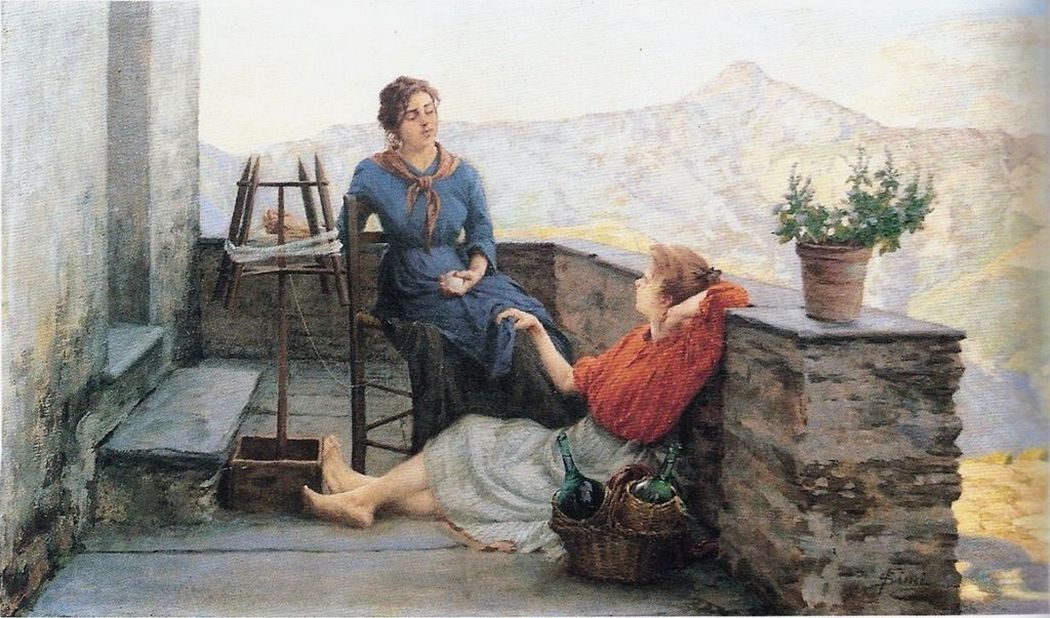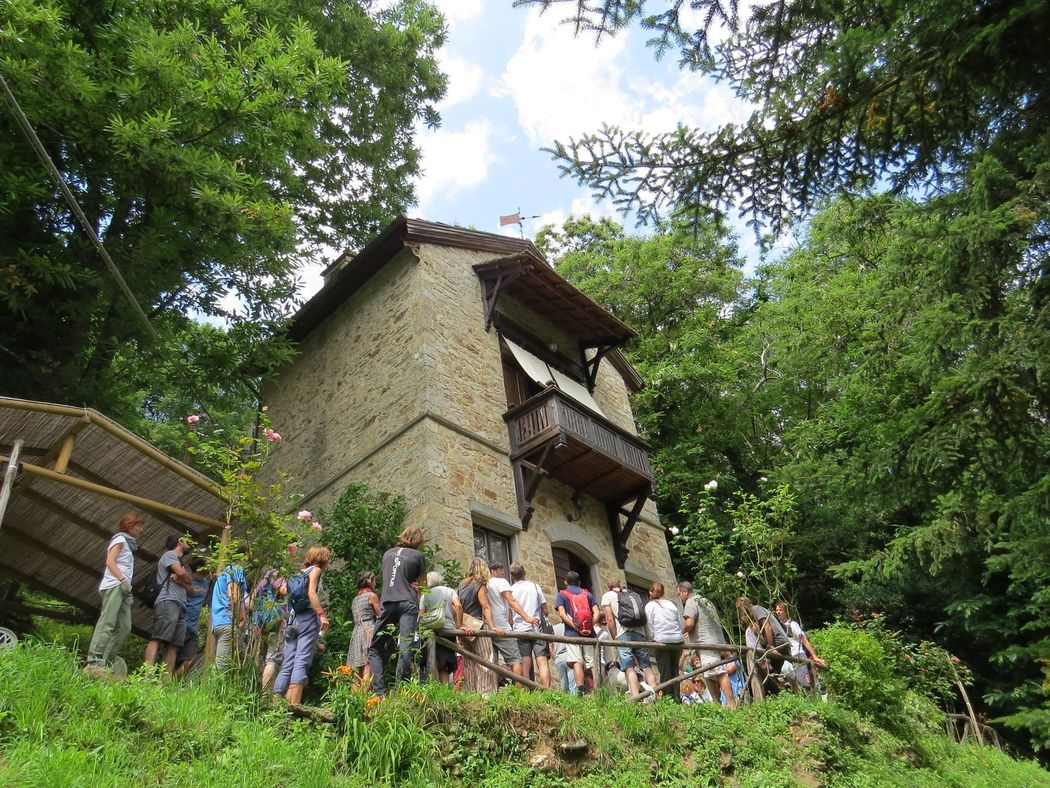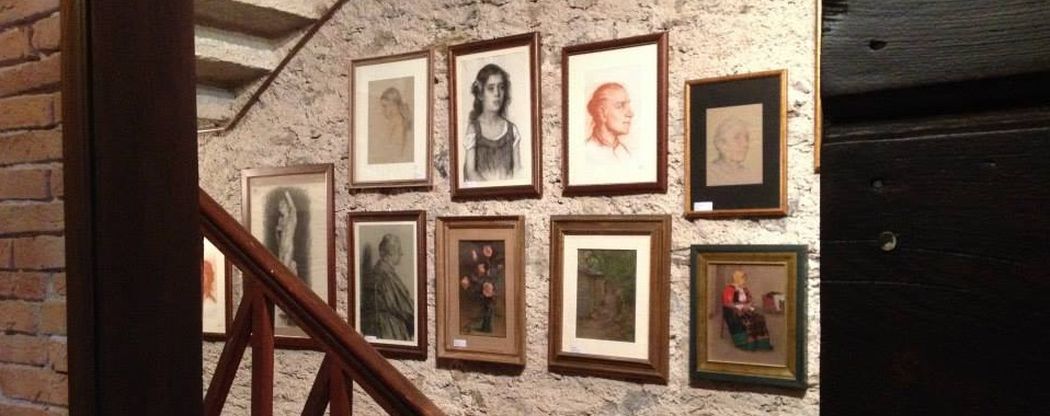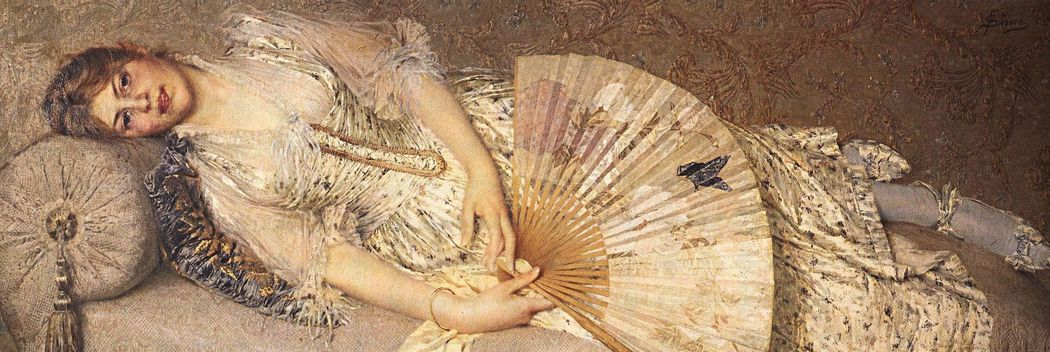Where the pathway rises from the depths of the valley...
Introducing Lo Studio Simi, former home of Filadelfo Simi (1843-1923) and Nera Simi (1890-1987). Here, the current owner discusses the history of the museum and the restoration of the house in 2010.
Lo Studio Simi is a museum with a unique history. The former summer home of Italian artists Filadelfo Simi (1843-1923) and Nera Simi (1890-1987), it served as inspiration for many of their works and became a refuge for Nera Simi during World War II. Here, current co-owner Maurizio Bertellotti discusses the history of the museum and the restoration that took place in 2010 which saved the Studio and preserved, among other items, a chest used to hide important artworks during the war years.
The original Italian follows.

Where the pathway rises from the depths of the valley in Stazzema, near to the hamlet of Scala, Filadelfo Simi built his studio in 1880. The tranquillity of the woods and the practical structure of the building – with ample south and north facing windows – inspired the creation of his most important works.
Filadelfo lived and worked in his studio through the years up until the summer preceding his death in Florence in 1923. His wife Adelaide and daughter Nera continued to visit the studio and in 1924, after Adelaide's death, Nera inherited the property and never once missed a Summer at the studio. During World War Two Nera declared to the Florentine authorities that should there be a Nazi invasion, she had a home near Stazzema she would retreat to. Nera eventually fled to the studio - we don't know how long she resided there.
-
"During World War Two Nera declared to the Florentine authorities that should there be a Nazi invasion, she had a home near Stazzema she would retreat to"
-
During Nera's lifetime the studio became a centre of activity. Nera hosted artists, students and friends welcoming them all to this special place. In 1987 when Nera was over 90 years old she died in Florence and the studio was sold just a few months after her death. After changing hands again ten years later the new owners began adapting the main living room where the fireplace is found. The owners constructed a partition for a cloakroom which disrupted the vast vertical space of the room but doubled the walk-able floor space, now above. This was fortunately the only adaptation done to the building over 28 years. Nothing else was compromised.

Then, in 2010, the house went up for sale again. It lay empty for five years until Moreno Gerhardi and myself bought the Studio. I had been one of the Simi family's former doctors and was inspired to buy the property with a desire to restore, conserve and evaluate the memory of the family. The abandonment of the last few years had damaged some of the structure in the wooden roof, the windows and doors, the balcony and other details but for the most part the general structure of the studio had remained substantially as it was originally and the interiors were preserved. We recovered several pieces of furniture from the turn of the 19th century that are shown in the paintings of this period, including pieces we can recognise in Nera's paintings. We recovered the original flooring, ceilings, fittings and window frames. With the air, light and tranquillity the building needed nothing more and soon returned to its former self.
-
"I was inspired to buy the property with a desire to restore, conserve and evaluate the memory of the family"
-
Today we enjoy showing visitors the table from 'The Sock Knitting Lesson' and 'Girl in Yellow', the balcony from 'Spinner' and the chair from 'The Girl who Spins'. Everything has a story. The China cups on display served tea to portrait artist Pietro Annigoni (I was there!) and even the large trunk was used as a hiding place for important works during the war years.
It is amazing to watch guests recognise the details of the fireplace, the window or even the surrounding countryside within the paintings themselves. During the restoration process we were incredibly moved to find the candlestick holder from 'The wife who reads the newspaper' amongst the garden rubbish. It was almost as if the family were thanking us for all the work we were doing.
Written by Maurizio Bertellotti, translated by Daphne Stevens
Discover more about Lo Studio Simi here.

All'interno del Simi Studio
Lo Studio di Scala...
A Stazzema, lungo la strada mulattiera che risale dal fondovalle, presso il borgo di Scala, attorno al 1880, Filadelfo Simi realizzò su suo progetto, una costruzione da destinare a studio di pittura. La quiete dei boschi e la funzionalità della struttura con ampie aperture verso sud e verso nord, favorirono l'ispirazione e la realizzazione delle sue opere più importanti. Filadelfo vi lavorò e vi abitò con la famiglia per diverse stagioni, praticamente fino all'estate precedente la sua morte avvenuta a Firenze nel 1923. La moglie e la Figlia Nera continuarono ad abitare lo Studio durante l'estate, e proprio qui, a seguito di un malore, la moglie Adelaide morì nel periodo del Ferragosto 1924. Per successione ereditaria Nera lo ebbe in parte, e non mancò mai di venire a trascorrevi le vacanze esive.
-
"La quiete dei boschi e la funzionalità della struttura con ampie aperture verso sud e verso nord, favorirono l'ispirazione e la realizzazione delle sue opere più importanti."
-
Nel 1944 Nera dichiara all'Autorità fiorentina di avere una abitazione presso Stazzema dove poter eventualmente sfollare nel caso di una occupazione nazista. Non sappiamo quanto vi risiedette. Certamente lo Studio ospitò amici e conoscenti che non mancarono di ricambiare. Nera trascorse molti periodi presso i Giorgini al Cinquale o a Forte dei Marmi e alcuni di loro ricordano ancora lo spartano ma pregnante soggiorno in quel suggestivo stabile. Nel 1987 Nera, ultranovantenne, muore a Firenze. (Per casualità non da poco, uno dei medici curanti è poroprio chi scrive queste righe divenuto nel frattempo, collezionista di opere dei Simi e proprietraio dello Studio). Lo Studio venduto dagli eredi entro pochi mesi, e dopo circa 10 anni, passò nuovamente di proprietà.
Siamo arrivati ai primi anni del nuovo secolo e il Proprietario pro tempore interviene pesantemente sul salone del Caminetto, realizzando una tramezzatura e un servizio igienico che comprometteranno necessariamente l'ampio volume verticale della sala, pur col vantaggio di raddoppiare lo spazio calpestabile. E' questo però per fortuna,l'unico intervento importante sullo stabile. Niente altro viene compromesso. Attorno al 2010 cambiano le necessità del Proprietario, che lo rimette in vendita . Solo cinque anni dopo, nel 2015, mossi dalla volontà di recuperare, conservare e valorizzare la memoria di questa Famiglia, Moreno Gherardi e Maurizio Bertellotti riescono ad acquistarlo.

Filadelfo Simi, Iridescenze della madreperla c.1895
L'abbandono degli ultimi anni aveva compromesso alcune strutture in legno del tetto, gli infissi, il balcone e altro, ma nella sostanza, in gran parte, lo Studio è rimasto com'era , nelle sue strutture importanti e sopratutto negli arredi. Abbiamo recuperato alcuni mobili già presenti a fine 800 che ritroviamo raffigurati nei quadri d'interno di quel periodo, altri li riconosciamo nelle pitture di Nera. Abbiamo recuperato pavimenti e soffitti, suppellettili e infissi senza grandi difficoltà ma con molta soddisfazione. L'aria, la luce e la quiete non hanno avuto bisogno di nulla... e il luogo è tornato quello di un tempo. Ci piace far vedere ai visitatori il tavolo della "Lezione di calza" o quello della "Ragazza in giallo", il balcone della "Filatrice" o la sedia della "Ragazza che fila", ci piace raccontare come le tazze esposte siano servite ad offrire il tè ad Annigoni (io c'ero), o come la grande cassapanca sia servita da nascondiglio di opere importanti durante la guerra.
E' bello vedere gli Ospiti che riconoscono nei quadri un particolare del caminetto, della finestra, o uno scorcio del paesaggio. E' suggestivo raccontare come durante i restauri, sotterrato tra i rifiuti in giardino, sia stato incredibilmente rinvenuto il candeliere raffigurato ne"La Moglie che legge il giornale",quasi un grazie dall'Aldilà per il lavoro che stiamo facendo.
Maurizio Bertellotti
